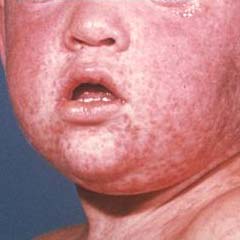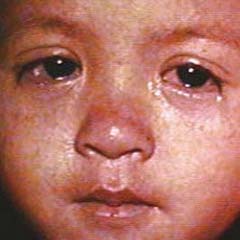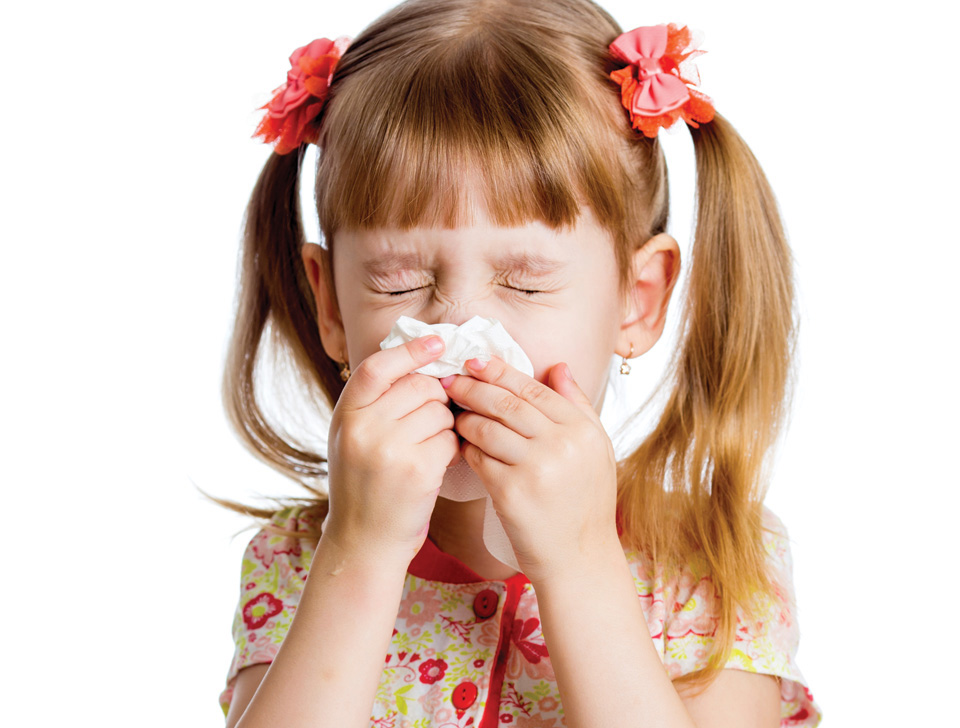It seems to happen all the time. A child walks into a classroom sniffling and sneezing. It's bad enough that the teacher and the other children might catch a cold. But with all the stories about the recent measles outbreak, now the teacher starts to think “what if the child has the measles?” How realistic is that? How widespread is the measles outbreak in the U.S. and is it likely that other kids will catch the virus simply by having a child briefly in the same room?
According to the Centers for Disease Control and Prevention, there have been 121 cases reported in 17 states this year as of February 6, 2015. Those cases have mostly been among very young, unvaccinated children. This is part of a large, ongoing outbreak that is linked to an amusement park in southern California. Authorities think the outbreak started from a traveler who became infected overseas, most likely in the Philippines, and then visited the amusement park while infected.
4 stages of measles
Measles is extremely contagious. A child with the virus can enter your classroom, sneeze once and infect many of the unvaccinated kids in the room from the droplets in the air left behind. That's why it's so important to recognize the symptoms early and quarantine the sick child. Measles generally follow a known progression:
Stage 1
Seven to 14 days after a person is infected, the child has a high fever, cough, running nose and red, watery eyes.
Stage 2
Two or three days after symptoms begin tiny white spots may appear inside the mouth.
Stage 3
Three to five days after the symptoms begin a rash breaks out. Flat red spots appear on the base at the hairline and spread downward to the neck, trunk arms and legs.
Stage 4
After a few days, the fever subsides and the rash fades.


Images from the Center for Disease Control and Prevention (CDC): www.cdc.gov/measles/about/photos.html
Prevention starts with vaccination
Despite the current outbreak, measles aren’t very common in the U.S. In fact, they were declared eliminated in the U.S. in 2000. That’s because most people have been vaccinated. However, children who are too young to get the measles, mumps, rubella (MMR) vaccine (such as babies in daycare) are susceptible. Older kids whose parents chose not to vaccinate them are at risk as well. Air scrubbers may be helpful in preventing the spread of the virus in the classroom if they can filter down to .1 microns. That’s small enough to draw the virus out of the air.
If you and the students in your classroom have been vaccinated for measles, the chances of getting the virus are slight. However, for optimum protection, the CDC recommends that:
Adults who were born after 1957 and can’t find written documentation that they were vaccinated against measles, should get at least one dose of the MMR vaccine.
Teenagers without written documentation indicating that they were vaccinated against measles should get at least one dose of the MMR vaccine.
All children should get two doses of MMR vaccine. They should get the first dose at 12 to 15 months of age and the second dose at 4 to 6 years of age. Children can receive the second dose earlier as long as it’s at least 28 days after the first dose.
The measles threat is real especially among the very young and unvaccinated. Play it safe, for everyone’s sake. Make sure to get yourself and your children vaccinated.





